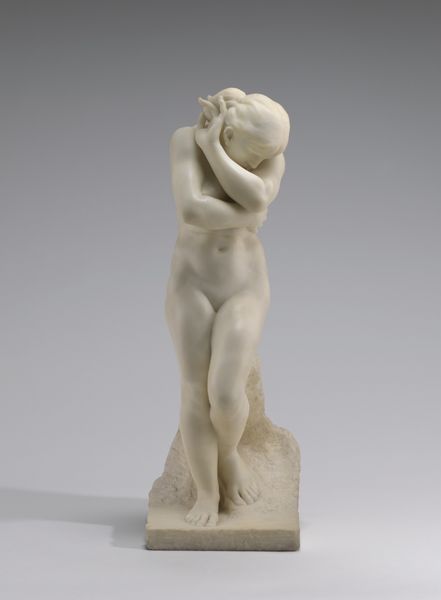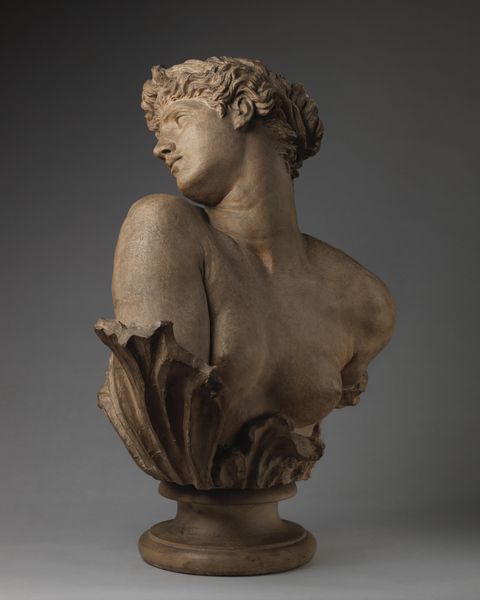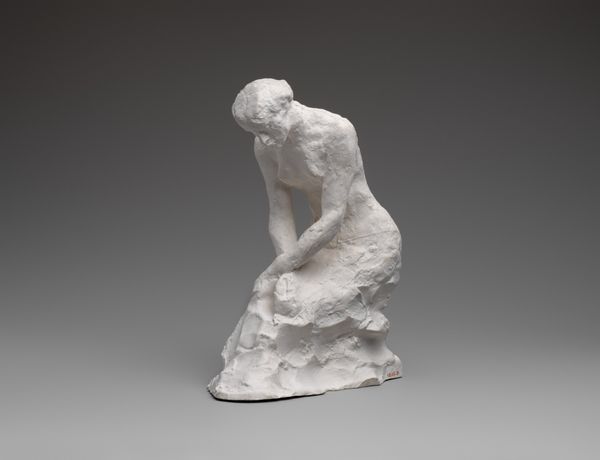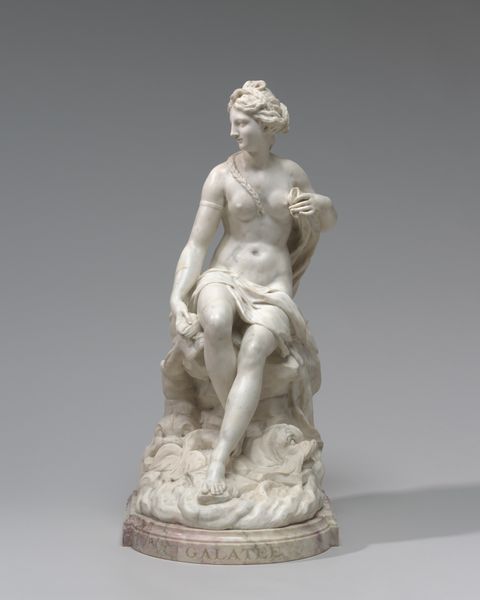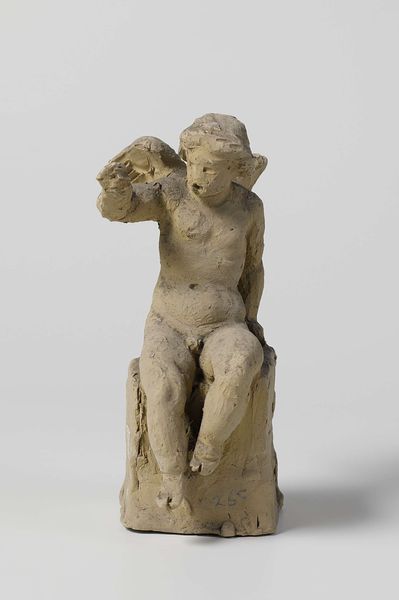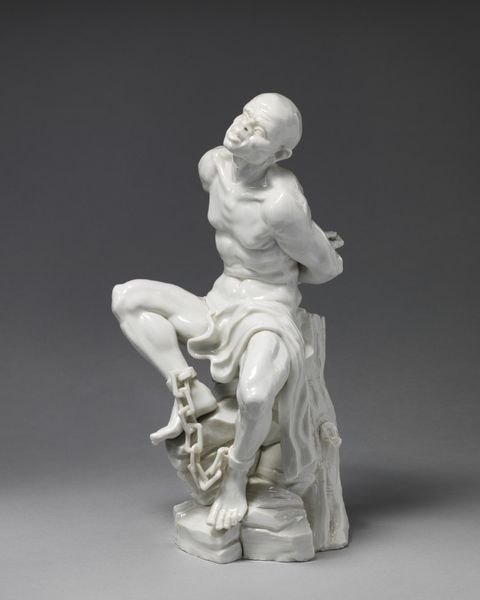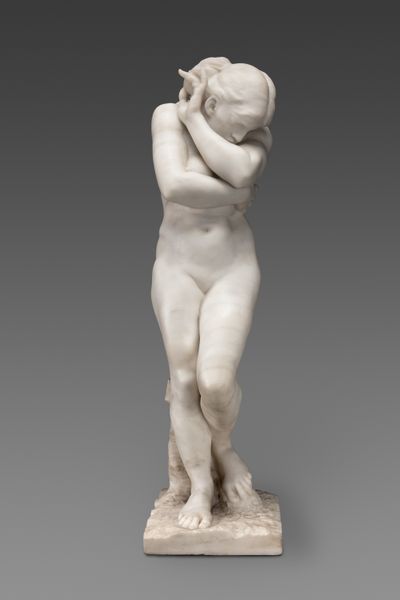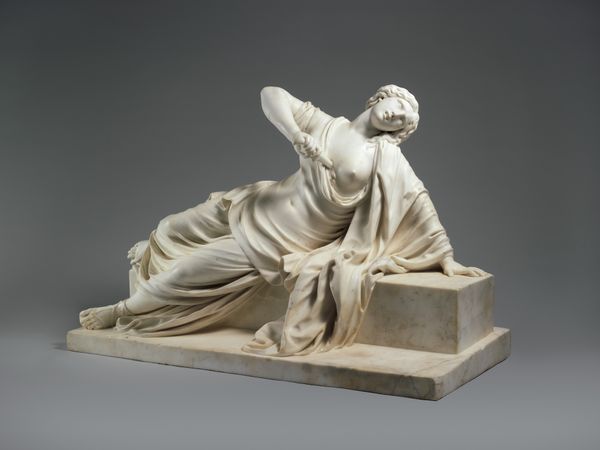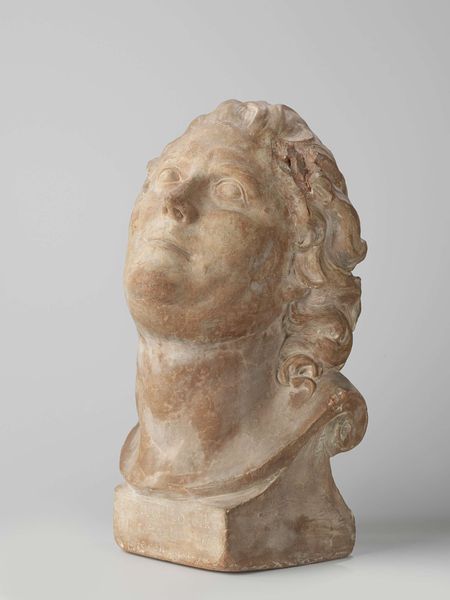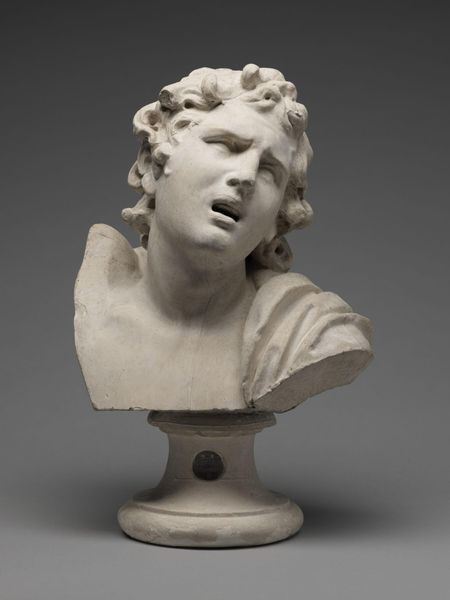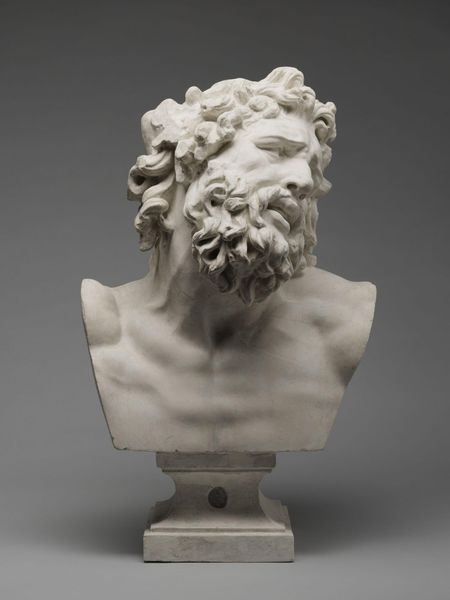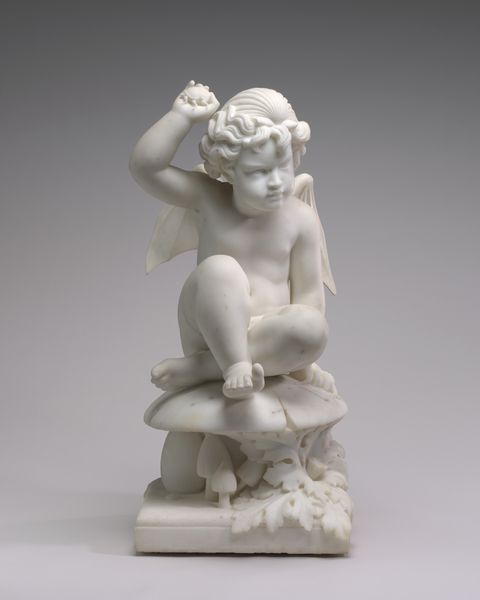
sculpture, marble
#
portrait
#
neoclacissism
#
sculpture
#
figuration
#
sculpture
#
academic-art
#
decorative-art
#
marble
Dimensions: Overall (confirmed): 22 9/16 × 14 × 10 1/8 in., 53.9 lb. (57.3 × 35.6 × 25.7 cm, 24.4 kg)
Copyright: Public Domain
Curator: The innocence is captivating, isn't it? The peaceful repose of youth. Editor: It’s exceptionally serene. There's almost a melancholic beauty in this boy's slumber, the slight droop of his mouth… it makes you wonder what dreams occupy his mind. Curator: Indeed. This is a marble sculpture called "Sleeping Boy," created between 1769 and 1779 by Philippe Laurent Roland. It’s currently housed at the Metropolitan Museum of Art. Roland was a key figure in late 18th-century French sculpture. A period where Neoclassicism began challenging the more exuberant styles that preceded it. Editor: You can certainly see that Neoclassical restraint. Yet, the romanticism is subtly present. The way his arm supports his head evokes classical imagery, like a young Endymion perhaps, but rendered with this palpable, almost fragile humanity. The dream motif itself is potent; in art, sleep is so often a space for exploring deeper truths. Curator: Sleep, particularly in the late 18th century, became associated with childhood innocence. Works like this helped to shape the era’s evolving attitude towards children—seen less as miniature adults, more as beings of innate purity to be cherished and nurtured. This also highlights the period’s engagement with new philosophies espousing innate goodness. Editor: Right. This links up with the iconographic importance of children at the time. The slumbering boy, you might even say, comes to symbolize not just innocence, but also potential and a hope for the future. In the right political and social context, these images also conveyed a more profound sentiment related to civic virtue. Curator: These kinds of representations played a role in solidifying new social conventions surrounding children and the home. While seemingly private and sentimental, artwork depicting children like this one were important political images too. They participated in shaping new public expectations of care. Editor: Definitely. And what’s interesting, if you think about it, is how even a pose seemingly so universal becomes loaded with historical and cultural meaning, almost beyond recognition at times. Thank you for clarifying all this historical information and giving so much depth to the piece. Curator: Thank you for making it deeper with your understanding.
Comments
No comments
Be the first to comment and join the conversation on the ultimate creative platform.
